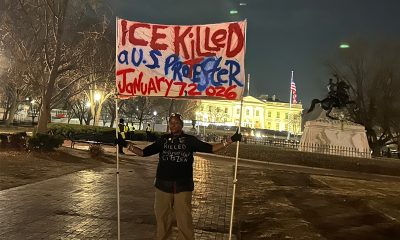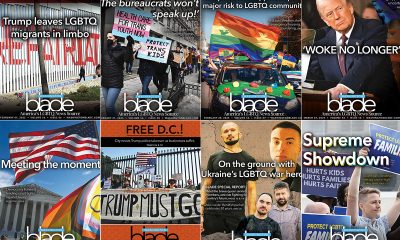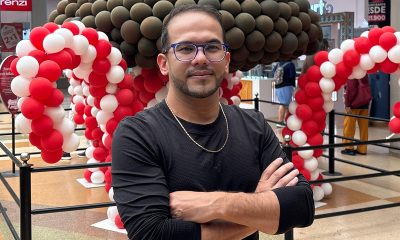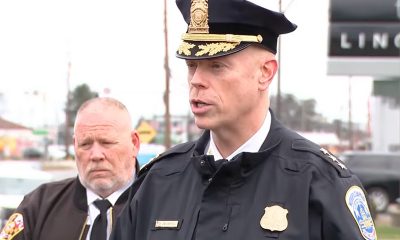a&e features
‘Boys Don’t Cry’ at 20: rethinking trans actors
Cis actress Hilary Swank won the Oscar playing a trans man but would it happen today?
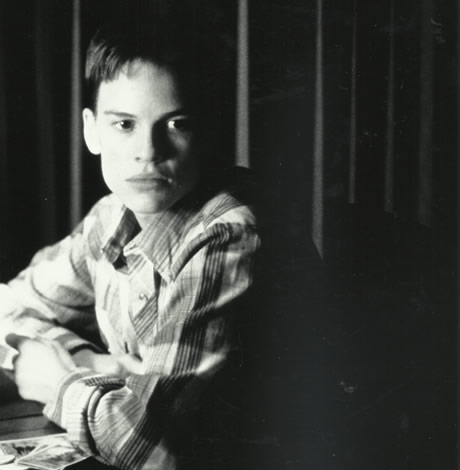
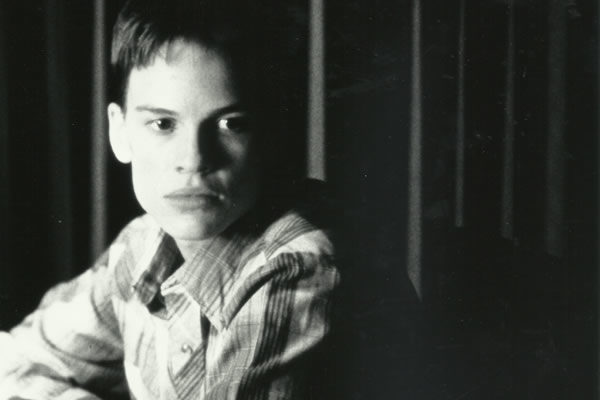
It’s been 20 years ago this month since the release of “Boys Don’t Cry,” the Fox Searchlight movie that depicted the true story of Brandon Teena, a trans man played by Hilary Swank, who adopts a male identity in Nebraska but is murdered in a hate crime.
Directed by Kimberly Peirce, whose interest was piqued by a 1994 Village Voice article about Teena, the film was made for $2 million and made $20 million at the box office. It premiered Oct. 8, 1999 at the New York Film Festival and went into wider release later in the month.
Swank won a bounty of awards for the role including prizes from the New York Film Critics Circle, the Chicago Film Critics, the Boston Society of Film Critics, the Independent Spirit Award, the Golden Globe and the Oscar. It was both widely praised in reviews at the time and holds an 88 percent fresh rating on Rotten Tomatoes.
It’s unlikely, though, that Swank would get cast in the role were it made today. With trans actresses Mj Rodriguez, Indya Moore, Dominique Jackson, Hailie Sahar and Angelica Ross having been cast on the Ryan Murphy FX drama “Pose,” and Scarlett Johansson all but forced to withdraw last year from her planned movie “Rub & Tug” (she was to play a trans character based on Dante Gill, who ran massage parlors in the ‘70s and ‘80s that were brothel fronts) after a backlash ensued, many say it’s a new day for trans actors. Of Johansson, trans actress Trace Lysette (Shea on “Transparent”) wrote on Twitter, “Not only do you play us and steal our narrative and our opportunity but you pat yourselves on the back with trophies and accolades for mimicking what we have lived.”
Cisgender backlash
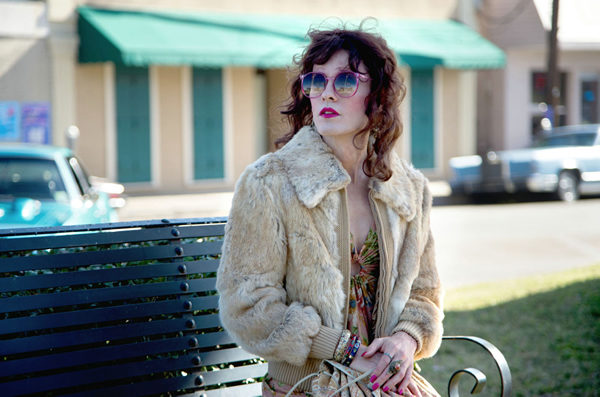
Elle Fanning drew ire the year before for being cast in “3 Generations” as Ray, a female-to-male trans teen. A groundswell had been building with actors like Matt Bomer in “Anything” (2017), Eddie Redmayne in “The Danish Girl” (2015) and Jared Leto in “Dallas Buyers Club” (2013) drawing muted but present backlash.
Conversely, on TV, trans actress Candis Cayne earned the distinction of being the first trans actress to play a recurring trans character on a primetime show when she played Carmelita on ABC’s short-lived “Dirty Sexy Money” (2007-2009). Trans actress Nicole Maines plays the first trans superhero as Dreamer/NiaNal on The CW’s “Supergirl.” In its latest report, GLAAD says there are 26 trans characters currently on TV, vs. 17 in its previous report.
Leto ended up winning a Best Supporting Actor Oscar for his role. Redmayne won the Best Actor Oscar for his and back in 2005, Felicity Huffman was nominated for playing trans in “Transamerica.” A trend was clearly at play — playing trans is Oscar catnip for cisgender actors.
That’s a problem, working trans actors today say.
“The Academy seems to see it as some heroic transformation, but is it any more a feat of acting than what, say, Daniel Day-Lewis did as Lincoln, or any number of great performances you could name,” says Samy Nour Younes, a trans male stage and screen actor in New York. “Beyond the fact that they’re playing another gender identity, the roles are usually not that good. If you watch ‘Boys Don’t Cry,’ ‘Transamerica’ or ‘Dallas Buyers Club,’ which is the worst among them, they’re not particularly well written characters period, not because they assumed a marginalized identity, but we think there’s something inherently taboo or exotic, but in a stigmatized kind of way, about it. Like, ‘Oh, you’re so brave, you deserve an Oscar,’ when it actually wasn’t that great.”
Younes says “Transparent,” the hit 2014-2019 (it just wrapped with a musical finale on Amazon Prime Video Sept. 27) show on which he guested twice in its fourth season, was a game changer just before “Pose” hit big. Although cis actor Jeffrey Tambor played Maura, a retired college professor who comes out as trans, creator Jill Soloway enacted a “transfirmative action program” for the show (cast and crew) where trans applicants were hired in preference to cis applicants. Tambor (“The Larry Sanders Show,” “Arrested Development”) left the show in late 2017 amid sexual misconduct allegations.
“Just letting trans people in the room — directors, writers, consultants — makes a huge difference,” Younes says. “That’s when we start getting layered and nuanced characters that tell stories beyond their transitions, with interesting people. We’re seeing less and less of a need for the Eddie Redmaynes of the world who say, ‘Oh, I did so much research,’ which I call bullshit on that because if you’d really done so much research, you’d have an understanding that we’re not just some costume you can slip on which just helps solidify the Academy’s thinking that that’s all it is and playing trans becomes a farce.”
The casting conundrum
Tammara Billik, a veteran Hollywood casting director known for her work on “Married … with Children” and the famous coming-out episode of “Ellen” in 1997, says things have come a long way since the “Boys Don’t Cry” era.
For one, she says, TV has come into a “golden age” that has “provided a lot more opportunities for all kinds of inclusive roles.”
“Not just with ‘Pose’ and ‘Transparent,’ but now there are a number of trans actors,” Billik, a lesbian, says. “I just read something about their being a trans actor in a series regular role on ‘The Politician’ with Ben Platt. I didn’t know anything about that. It’s happening without a big splash, it’s happening on weekly shows, so I think there is tremendous progress in terms of the trans actor community, particularly on TV.”
Film, she says, is different.
“When ‘Boys Don’t Cry’ came out, gosh, I don’t think I knew a trans actor at the time. … It certainly wouldn’t have been a time when a trans actor would have been cast. Now you would be hard pressed to cast that role with a cis actor,” Billik says. “You just wouldn’t do it, right?”
She says the Johansson episode was “a giant shift.”
“In both a good and bad way,” Billik says. “It’s good for the actors and a good way to show more diversity on television but we’ve also seen a backlash against particularly trans women of color. I’m not saying ‘Pose’ is responsible for it, but people get angry when you show them the truth. We’re all wondering why so many trans women of color are being targeted for violence. Is it because we’re seeing their images more on TV, is it because people have been emboldened by Trump? I don’t know the answer to that.”
It’s an issue GLAAD has been working on for years. Nick Adams and Alex Schmider, GLAAD’s Transgender Media Program team, work with TV networks, production companies, showrunners, script writers, casting directors and agencies as well as PR firms to help bring what it calls “fair and accurate representations for transgender people to the screen.”
They say things are improving dramatically.
“Hollywood is beginning to tell more accurate and well-rounded stories about transgender people and casting trans characters more authentically,” Schmider said in an e-mail comment to the Blade. “Not only are trans characters starting to be written with more nuance, complexity and humanity in the worlds in which they exist, but casting has also begun to evolve in positive ways.”
By their count, there’s only one cis actor still playing a trans role on TV.
The issue is a bit more complex, casting vets say, than “casting more authentically.” Alexa L. Fogel, casting director for “Pose” and a slew of HBO shows such as “Oz,” “The Wire,” and others, says it’s “a really complicated issue” that has multiple angles.
“TV is easier in that you’re creating characters, you’re creating roles, you’re creating stars,” she says. “In the case of ‘Pose,’ none of these people were known before. A lot of them hadn’t really acted before. These roles could be crafted around these people’s strengths to some degree, not so much in the character of Elektra, with her we had to find someone who could deliver what was on the page, and that was challenging for sure, but I think the other side of it is that certainly with films, there are certainly situations in which you need to sell tickets to things. Certain things might not get made without movie stars. These are complicated questions and I don’t know that anyone knows the answers to them all yet, but it’s a conversation.”
The decision to cast trans actors on “Pose” was made prior to Fogel’s involvement with the show. She says that added a layer to the casting process, but she didn’t see it as an extra burden.
“It’s part of the joy of the job,” says Fogel, who declined to state her own sexual orientation or gender identity. “It’s about rising to the challenge. I never considered that it couldn’t be done. It was just about, you know, doing the research, getting ambassadors to the community, making sure I had enough time to meet enough people. Anytime you do something that’s less visible, it’s more time consuming.”
How deep was the talent pool?
“I wouldn’t say it was a huge talent pool, but I’ve done a lot of projects where you just have to really put your head down and do extra research and this was one of them,” she says. “It was challenging but it never felt that it was going to be impossible. It just meant we had to do extra work.”
She’s not aware if the Screen Actors Guild tracks its members’ gender identity (SAG did not respond to requests for clarification on that). Fogel says membership is easy to secure once she casts a lead role.
Could ‘Pose’ be a fluke?
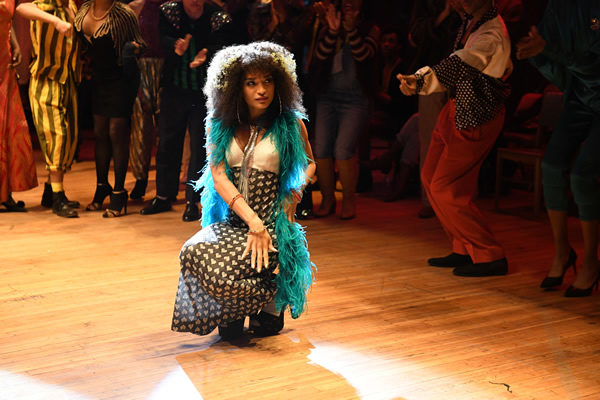
Is “Pose” a one-off or a game changer?
“I don’t have a crystal ball, but I think yeah, the ground is certainly shifting in terms of the conversation,” Fogel says. “I think it’s ultimately about the writing, about the culture and what people feel like they want to see. People want real representation and that seems to be happening across the board.”
Billik agrees.
“‘Pose’ is telling a story that’s really spectacular and a lot of people are really responding to it, so I don’t think it will be a one-off,” she says. “I think we’ll see a whole slew of trans actors cast because of it.”
Aneesh Seth, a trans actress on the Netflix show “Jessica Jones,” says there’s still “a long way to go.”
“Athough trans folks have gained some control over the types of trans narratives out there, they can still tend to be reductive and focused on our trauma,” she said in an e-mail. “Where are the stories of trans folks winning? Falling in love? Having successful marriages and careers?”
Is this the end, at least, of the big stars taking home Oscars and nominations for all the major trans movie roles? And how realistic is it — theoretically — for a trans actor to have given the caliber of performance Swank gave in “Boys Don’t Cry”?
Some say it’s a chicken-or-the-egg argument. If trans actors had been given time to build up their resumes on equal footing with a Swank or a Jared Leto, who knows what they might have achieved? That’s not to say they had easy rides — Swank and her mother, for a time, lived out of a car upon moving to Los Angeles as Swank pursued her dream. But inarguably, upon starting her acting career, she got cast in varied roles far faster and more regularly than any trans actor would have fared, especially in the ‘90s.
Fogel, especially, says it’s hard to account realistically for “what ifs.”
“You can’t really know the answer to that without doing the work,” she says. “I couldn’t have answered any of these questions about ‘Pose’ before I’d done it. The process is so important when it comes to casting. You really have to do the work to find the people, it’s all about the process.”
Looking ahead
The path ahead, many agree, is bright.
“I actually think Time magazine jumped the gun a little bit when they put Laverne Cox on the cover for ‘Orange is the New Black’ and said it was ‘The Transgender Tipping Point,’” Younes says. “Not to take anything away from her, but I think the tipping point is actually now because it’s not just one, it’s multiple roles. There’s a brand new pool of talent and we’re more open to the fact that it could come from anywhere.”
Several folks interviewed for this piece mentioned bit parts they’d seen trans actors cast in of late. Billik just saw “Moulin Rouge” on Broadway and said one of four ladies in the opening number was trans. Younes knows a trans colleague in the ensemble in “Tina: the Tina Turner Musical,” which opens at the Lunt-Fontanne Theatre on Broadway next month (previews are in October). He also cites two trans actors with brief speaking parts in this summer’s “Spider Man: Far From Home.”
GLAAD reps helped cast Zoey Luna, a trans Latina actress, in “The Craft” reboot from Sony as Lourdes, one of the lead girls in the coven who happens to be trans. In 2018, not one of the 110 major studio films released included a trans character, according to GLAAD.
“So this casting and character are game changers in the film landscape,” Schmider says.
Non-binary actor Asia Kate Dillon on Showtimes “Billions,” is another positive step, many agree. And Daniela Vega made history in “Fantastic Woman,” a 2017 Chilean drama that won an Oscar. Vega was the first trans presenter in the history of the Academy Awards when she presented in 2018.
“This isn’t a trend, this isn’t just the topic du jour,” Younes says. “For decades, all we could get were playing the dead hooker on ‘Law & Order: SVU.’ … I hope it’s a continuing trend for trans people making inroads in entertainment.”
SIDEBAR: ‘Boys Don’t Cry’: problematic in retrospect?
Although it was seen as fairly groundbreaking in its day, the 1999 film “Boys Don’t Cry” hasn’t aged particularly well, some argue.
Donna Minkowitz, the writer of the original Village Voice story that inspired the movie, apologized last year in a piece she wrote (also for the Voice) called “How I broke, and botched, the Brandon Teena Story.”
“For years, I have wanted to apologize for what I now understand, with some shame, was the article’s implicit anti-trans framing,” Minkowitz wrote. “Without spelling it out, the article cast Brandon as a lesbian who hated ‘her’ body because of prior experiences of childhood sexual abuse and rape. … At the time, I was extremely ignorant about trans people. Like many other cis queer people at the time, I didn’t know that there were gay trans men, trans lesbians, bisexual trans folks, that being trans had nothing to do with whether you were straight or gay, and that trans activism was not, as some of us feared, an effort to stave off queerness and lead ‘easier,’ more conventional heterosexual lives.”
The trope of the butch lesbian who takes things “just a little too far” and comes out as trans, is a recurring one, trans actor Samy Nour Younes says. He, too, found the film adaptation “problematic.”
“There was a similar storyline on ‘The L Word,’ when Max Sweeney starts taking hormones and becomes this raging monster, a really awful storyline. Seeing some of those things and ‘Boys Don’t Cry’ were the first representations I saw of a trans masculine storyline and stopped me from coming out sooner.”
a&e features
Queer highlights of the 2026 Critics Choice Awards: Aunt Gladys, that ‘Heated Rivalry’ shoutout and more
Amy Madigan’s win in the supporting actress category puts her in serious contention to win the Oscar for ‘Weapons’

From Chelsea Handler shouting out Heated Rivalry in her opening monologue to Amy Madigan proving that horror performances can (and should) be taken seriously, the Critics Choice Awards provided plenty of iconic moments for queer movie fans to celebrate on the long road to Oscar night.
Handler kicked off the ceremony by recapping the biggest moments in pop culture last year, from Wicked: For Good to Sinners. She also made room to joke about the surprise hit TV sensation on everyone’s minds: “Shoutout to Heated Rivalry. Everyone loves it! Gay men love it, women love it, straight men who say they aren’t gay but work out at Equinox love it!”
The back-to-back wins for Jacob Elordi in Frankenstein and Amy Madigan in Weapons are notable, given the horror bias that awards voters typically have. Aunt Gladys instantly became a pop culture phenomenon within the LGBTQ+ community when Zach Cregger’s hit horror comedy released in August, but the thought that Madigan could be a serious awards contender for such a fun, out-there performance seemed improbable to most months ago. Now, considering the sheer amount of critics’ attention she’s received over the past month, there’s no denying she’s in the running for the Oscar.
“I really wasn’t expecting all of this because I thought people would like the movie, and I thought people would dig Gladys, but you love Gladys! I mean, it’s crazy,” Madigan said during her acceptance speech. “I get [sent] makeup tutorials and paintings. I even got one weird thing about how she’s a sex icon also, which I didn’t go too deep into that one.”
Over on the TV side, Rhea Seehorn won in the incredibly competitive best actress in a drama series category for her acclaimed performance as Carol in Pluribus, beating out the likes of Emmy winner Britt Lower for Severance, Carrie Coon for The White Lotus, and Bella Ramsey for The Last of Us. Pluribus, which was created by Breaking Bad’s showrunner Vince Gilligan, has been celebrated by audiences for its rich exploration of queer trauma and conversion therapy.
Jean Smart was Hack’s only win of the night, as Hannah Einbinder couldn’t repeat her Emmy victory in the supporting actress in a comedy series category against Janelle James, who nabbed a trophy for Abbott Elementary. Hacks lost the best comedy series award to The Studio, as it did at the Emmys in September. And in the limited series category, Erin Doherty repeated her Emmy success in supporting actress, joining in yet another Adolescence awards sweep.
As Oscar fans speculate on what these Critics Choice wins mean for future ceremonies, we have next week’s Golden Globes ceremony to look forward to on Jan. 11.
a&e features
Looking back at the 10 biggest A&E stories of 2025
‘Wicked,’ Lady Gaga’s new era, ‘Sexy’ Bailey and more

Although 2025 was a year marked by countless attacks on trans rights and political setbacks, the year also saw brilliant queer artists continuing to create art. From Cannes and Sundance Award winners now vying for Oscar consideration to pop icons entering new stages of their careers, queer people persevered to tell their stories through different media.
With the state of the world so uncertain, perhaps there’s no more vital time to celebrate our wins, as seen through some of this year’s top pop culture moments. While there’s no collection of 10 stories that fully encompass “the most important” news, here are some events that got the gays going:
10. ‘Mysterious Gaze of the Flamingo’ wins big at Cannes

The Cannes Film Festival has become a crucial start for films hoping to make their way to the Oscars, and first-time director Diego Céspedes won the top Un Certain Regard prize for his intimate western “The Mysterious Gaze of the Flamingo.” The film is set in the ‘80s and is intended as an allegory for the AIDS epidemic. Seeing a film that unpacks vital queer history win one of the most coveted awards at Cannes has been a huge point of pride in the independent filmmaking community.
Since the film bowed at Cannes, it has been selected as Chile’s Oscar entry in the Best International Feature race. Speaking with The Blade during the film’s AFI Fest run in October, Céspedes said: At first, I was kind of scared to have this campaign position in the times that we’re living [in] here. But at the same time, I think the Oscars mean a huge platform — a huge platform for art and politics.”
9. ‘The Last of Us’ returns for an even gayer season 2
While the first season of The Last of Us gave us one of TV’s most heartbreaking queer love stories in the episode “Long, Long Time,” Season 2 doubled down on its commitment to queer storytelling with the blossoming relationship between Ellie (Bella Ramsey) and Dina (Isabela Merced). The show expanded on the pair’s relationship in the original video game, making it perhaps the central dynamic to the entire season. That unfortunately came with more homophobic backlash on the internet, but those who checked out all the episodes saw a tender relationship form amid the show’s post-apocalyptic, often violent backdrop. For their performance, Ramsey was once again nominated for an Emmy, but Merced deserved just as much awards attention.
8. ‘Emilia Pérez’ sparks controversy
Jacques Audiard’s genre-bending trans musical “Emilia Pérez” proved to be an awards season juggernaut this time last year, winning the Golden Globe for Best Musical/Comedy. But when the lead star Karla Sofia Gascón’s racist, sexist, and homophobic old tweets resurfaced, the film’s Oscar campaign became a tough sell, especially after Netflix had tried so hard to sell Emilia Pérez as the “progressive” film to vote for. Mind you, the film had already received significant backlash from LGBTQ+ audiences and the Mexican community for its stereotypical and reductive portrayals, but the Gascón controversy made what was originally just social media backlash impossible to ignore. The only person who seemed to come out of the whole debacle unscathed was Zoe Saldaña, who won the Oscar for Best Supporting Actress over Ariana Grande.
7. ‘Sorry, Baby’ establishes Eva Victor as major talent
Back in January at the Sundance Film Festival, Eva Victor (known by many for her brand of sketch comedy) premiered their directorial debut “Sorry, Baby” to rave reviews, even winning the Waldo Salt Screening Award. Victor shadowed Jane Schoenbrun on the set of “I Saw the TV Glow,” and seeing Victor come into their own and establish such a strong voice immediately made them one of independent cinema’s most exciting new voices. A memorable scene in the film sees the main character, Agnes (played by Victor), struggling to check a box for male or female, just one example of how naturally queerness is woven into the fabric of the story.
Most recently, Victor was nominated for a Golden Globe for her performance in the film, and she’s represented in a category alongside Jennifer Lawrence (“Die My Love”), Jessie Buckley (“Hamnet”), Julia Roberts (“After the Hunt”), Renate Reinsve (“Sentimental Value”) and Tessa Thompson (“Hedda”). The film also received four Independent Spirit Award nominations overall.
6. Paul Reubens comes out in posthumous doc

While Paul Reubens never publicly came out as gay before passing away in 2023, the two-part documentary “Pee-wee as Himself” premiered back in May on HBO Max, giving the legendary comedian a chance to posthumously open up to the world. Directed by Matt Wolf, the documentary explores how Reubens found his alter ego Pee-Wee Herman and why he kept his private life private.
The documentary won an Emmy in the Outstanding Documentary or Nonfiction Special category and remains one of the most critically acclaimed titles of the year with a 100% Rotten Tomatoes score. Also worth noting, the National Geographic documentary Sally told the posthumous coming out story of Sally Ride through the help of her long-time partner, Tam O’Shaughnessy.
5. Lady Gaga releases ‘Mayhem’
Lady Gaga entered a new phase of her musical career with the release of Mayhem, her seventh album to date. From the frenzy-inducing pop hit Abracadabra to the memorable Bruno Mars duet featured on “Die With a Smile,” seeing Gaga return to her roots and make an album for the most die-hard of fans was especially rewarding after the underwhelming film releases of “House of Gucci” and “Joker: Folie à Deux.” Gaga has been touring with The Mayhem Ball since July, her first arena tour since 2018. She even extended her tour into 2026 with more North American dates, so the party isn’t stopping anytime soon. And Gaga is even set to make an appearance next May in “The Devil Wears Prada 2.”
4. Cynthia Erivo, Ariana Grande perform at the Oscars

While “Wicked: For Good” didn’t quite reach the heights of the first film, we will forever have Cynthia Erivo and Ariana Grande’s breathtaking live performance that opened the 97th Academy Awards. The pair sang a rendition of “Over the Rainbow,” “Home,” and “Defying Gravity,” paying proper homage to the original 1939 “Wizard of Oz.” Even non-Wicked fans can’t deny how magical and brilliantly staged this performance was. With both Erivo and Grande up for acting Oscars last year, they’re hoping to repeat success and make history with consecutive nominations. Either way, let’s hope there’s another live performance in the making, especially with two new original songs (The Girl in the Bubble and No Place Like Home) in the mix.
3. Indya Moore speaks out against Ryan Murphy
Indya Moore has consistently used social media as a platform for activism, and in September, posted a 30-minute Instagram live speaking out against “Pose” co-creator Ryan Murphy. Moore claimed that Murphy wasn’t being a true activist for trans people. “Ryan Murphy, we need you to do more. You need to address the racism, the violence, and the targeting of people on your productions, Ryan Murphy. You do need to make sure trans people are paid equally. Yes, Janet did the right thing,” Moore said. Murphy was also back in the headlines this year for the critically panned “All’s Fair” and the controversial “Monster: The Ed Gein Story” starring Laurie Metcalf and Charlie Hunnam.
2. Cole Escola wins Tony for Best Leading Actor
Few pop culture moments this year brought us together more than Cole Escola winning a Tony award for “Oh, Mary!” the Broadway show they created, wrote and starred in (we love a triple threat!) Escola made history by becoming the first nonbinary person to win a Tony in the leading actor category, and seeing them excitedly rush to the stage wearing a Bernadette Peters-inspired gown instantly became a viral social media moment.
The cherry on top of Escola’s major moment is the recent news that they are writing a Miss Piggy movie with Jennifer Lawrence and Emma Stone producing — news that also broke the internet for the better. We cannot wait!
1. Jonathan Bailey makes gay history as ‘Sexiest Man Alive’

The same year as his on-screen roles in blockbusters “Jurassic World Rebirth” and “Wicked: For Good,” Jonathan Bailey made history as the first openly gay man to be named People magazine’s “Sexiest Man Alive.” The fact that it took 40 years for an openly gay man to earn the title is a signifier of how far we still have to go with queer representation, and seeing Bailey celebrated is just one small step in the right direction.
“There’s so many people that want to do brilliant stuff who feel like they can’t,” he told PEOPLE, “and I know the LGBT sector is under immense threat at the moment. So it’s been amazing to meet people who have the expertise and see potential that I could have only dreamed of.” In 2024, Bailey founded the charity titled The Shameless Fund, which raises money for LGBTQ+ organizations.
a&e features
Your guide to D.C.’s queer New Year’s Eve parties
Ring in 2026 with drag, leather, Champagne, and more
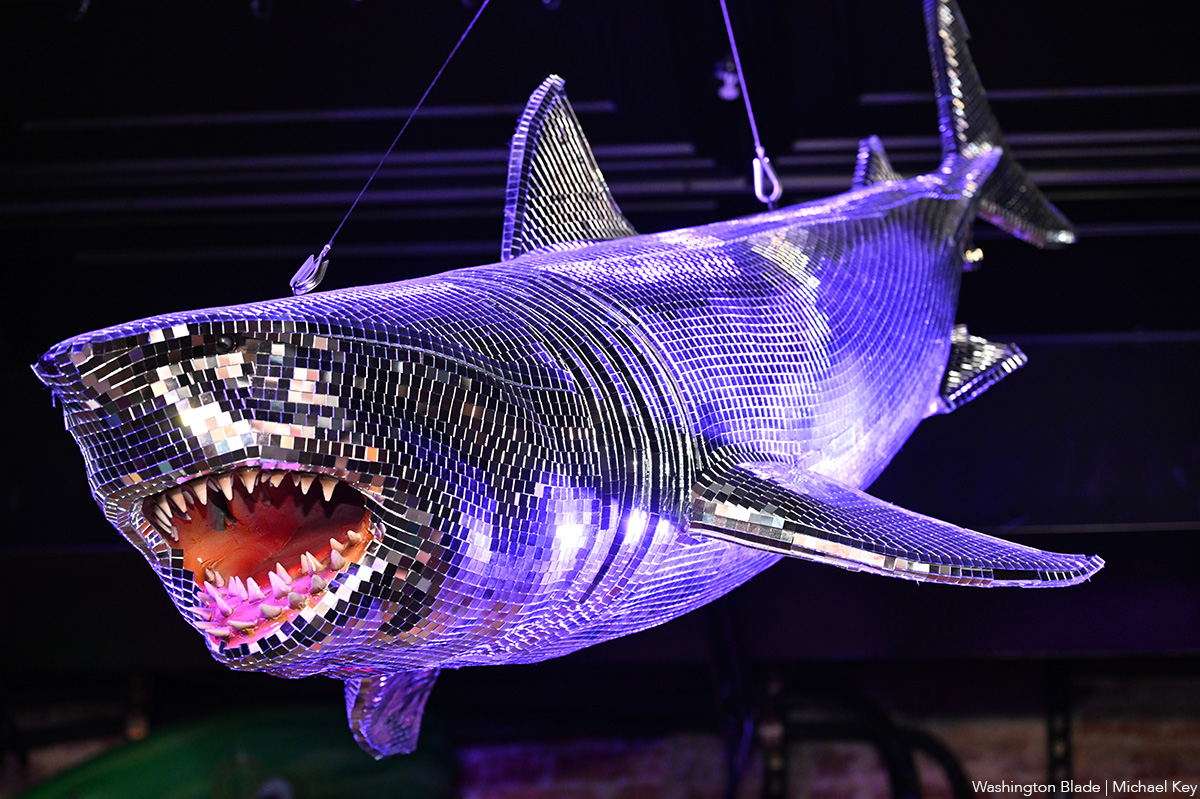
With Christmas in the rear view mirror, we can turn our attention to ringing in a much-anticipated New Year with a slew of local LGBTQ parties. Here’s what’s on tap.
Pitchers
This spacious Adams Morgan bar is hosting the “Pitchers’ Perfect New Year’s Eve.” There will be a midnight Champagne toast, the ball drop on the big screens, and no cover, all night long. The bar doesn’t close until 4 a.m., and the kitchen will be open late (though not until close). All five floors will be open for the party, and party favors are promised.
Trade
D.C.’s hottest bar/club combo is leaning into the Shark motif with its NYE party, “Feeding Frenzy.” The party is a “glitterati-infused Naughty-cal New Year’s Even in the Shark Tank, where the boats are churning and the sharks are circling.” Trade also boasts no cover charge, with doors opening at 5 p.m. and the aforementioned Shark Tank opening at 9 p.m.. Four DJs will be spread across the two spaces; midnight hostess is played by Vagenesis and the two sea sirens sensuously calling are Anathema and Justin Williams.
Number Nine
While Trade will have two DJs as part of one party, Number Nine will host two separate parties, one on each floor. The first floor is classic Number Nine, a more casual-style event with the countdown on TVs and a Champagne midnight toast. There will be no cover and doors open at 5 p.m. Upstairs will be hosted by Capital Sapphics for its second annual NYE gathering. Tickets (about $50) include a midnight Champagne toast, curated drink menu, sapphic DJ set by Rijak, and tarot readings by Yooji.
Crush
Crush will kick off NYE with a free drag bingo at 8 p.m. for the early birds. Post-bingo, there will be a cover for the rest of the evening, featuring two DJs. The cover ($20 limited pre-sale that includes line skip until 11 p.m.; $25 at the door after 9 p.m.) includes one free N/A or Crush, a Champagne toast, and party favors (“the legal kind”). More details on Eventbrite.
Bunker
This subterranean lair is hosting a NYE party entitled “Frosted & Fur: Aspen After Dark New Year’s Eve Celebration.” Arriety from Rupaul Season 15 is set to host, with International DJ Alex Lo. Doors open at 9 p.m. and close at 3 p.m.; there is a midnight Champagne toast. Cover is $25, plus an optional $99 all-you-can-drink package.
District Eagle
This leather-focused bar is hosting “Bulge” for its NYE party. Each District Eagle floor will have its own music and vibe. Doors run from 7 p.m.-3 a.m. and cover is $15. There will be a Champagne toast at midnight, as well as drink specials during the event.
Kiki, Shakiki
Kiki and its new sister bar program Shakiki (in the old Shakers space) will have the same type of party on New Year’s Eve. Both bars open their doors at 5 p.m. and stay open until closing time. Both will offer a Champagne toast at midnight. At Kiki, DJ Vodkatrina will play; at Shakiki, it’ll be DJ Alex Love. Kiki keeps the party going on New Year’s Day, opening at 2 p.m., to celebrate Kiki’s fourth anniversary. There will be a drag show at 6 p.m. and an early 2000s dance party 4-8 p.m.
Spark
This bar and its new menu of alcoholic and twin N/A drinks will host a NYE party with music by DJ Emerald Fox. Given this menu, there will be a complimentary toast at midnight, guests can choose either sparkling wine with or without alcohol. No cover, but Spark is also offering optional wristbands at the door for $35 open bar 11 p.m.-1 a.m. (mid-shelf liquor & all NA drinks).
-

 Colombia5 days ago
Colombia5 days agoGay Venezuelan man who fled to Colombia uncertain about homeland’s future
-

 Arts & Entertainment5 days ago
Arts & Entertainment5 days ago2026 Most Eligible LGBTQ Singles nominations
-

 District of Columbia4 days ago
District of Columbia4 days agoKennedy Center renaming triggers backlash
-

 District of Columbia5 days ago
District of Columbia5 days agoNew interim D.C. police chief played lead role in security for WorldPride

